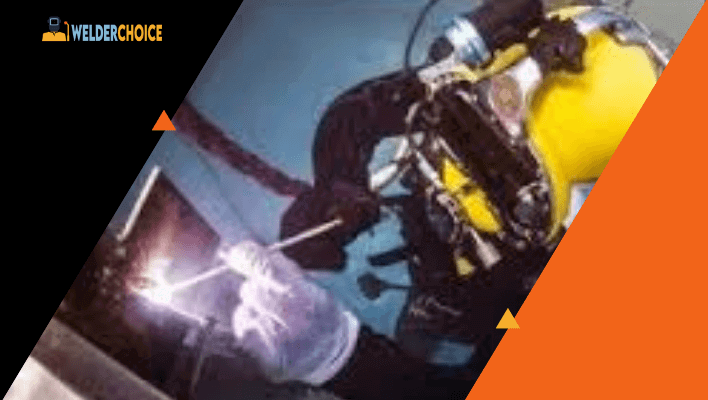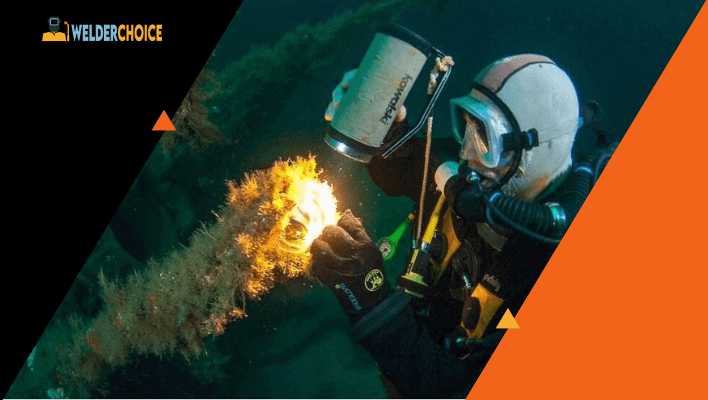Underwater welder salary is a high due to its specialized category of welding. Underwater welders do jobs underwater construction, and repair.
Underwater welders are used for underwater structural construction, surveying, and maintenance.
Among the industries where they work are oilfields, shipbuilding and repair, offshore construction, nuclear power, mining, pipelines, military, and public dams, canals, and locks.
A commercial diving firm employs the bulk of underwater welders. Others work for marine construction companies, shipping companies, oil and gas companies, or the military.
Salaries for underwater welders vary a lot, but they’re usually greater than those for welders who solely work on dry land. This is owing to the additional training and certifications that are required, as well as the environment in which they operate and the amount of risk they are exposed to.
What Factors Impact On Pay Rates?
An underwater welder must first finish formal training at a recognized institution or program that meets the certification standards of the American Welding Society.
They must also complete a commercial diver certification/licensing program. Underwater welding is a highly specialized amount that necessitates extensive training.
The welder amount varies depending on the level of training necessary, the type of welding operation performed, the level of risk involved, the welder’s experience, and the distance and frequency of travel required.
Let’s look at some of the factors that influence underwater welders’ ability to earn more money.
Experience
The majority of underwater divers start out as “tenders,” or apprentices. A diver in apprentice mode earns significantly less than a diver with greater experience. Starting pay for a highly skilled diver is roughly $35,000 and can increase to beyond $100,000-$200,000. Experienced underwater welders are worth a lot more because of the inherent dangers in the industry and the technical talents necessary.
Types Of Welding
Underwater welding can be done wet or dry. While underwater wet welding, a diver is submerged in water.
The welder uses a shielded metal arc stick welder, which is powered by DC current transmitted by an underwater cable system, to make the weld. The gas bubble formed by the arc on the stick welder protects the weld.
During underwater dry welding, dry enclosures are erected around the weld region. The chamber is flooded with air. This allows the diver to create a weld in a chamber with the proper pressure.
Each one requires a distinct set of skills as well as a higher level of risk.
Location
Welders that work underwater rarely stay in one spot for long periods of time. Inland places such as rivers, lakes, and ponds employ some people. Others operate in far-flung offshore ocean locations all around the globe.
Offshore underwater welders are often paid more than onshore underwater welders due to the extensive travel and greater water depths involved in their operation.
Hazards
On a daily basis, underwater welders use massive equipment designed specifically for underwater welding in an unsecure and often deadly environment.
Furthermore, many underwater welders work at significant depths underwater, putting their bodies through far greater physical strain than is typical. It should go without saying that this type of action is extremely dangerous.
As a Freshwater Welder, you can earn a lot of money.
Inland freshwater welders might make between $50,000 and $80,000 per year. The majority of employees are paid and may expect a 40-hour work week with minimal travel.
Freshwater’s Unique Challenges

While learning how to weld takes only a few minutes, perfecting how to dive while welding can take years.
Fresh water does not have salt ions to offer natural buoyancy, as do divers who weld in saltwater. So it requires a lot of practice to learn to dive in freshwater lakes and rivers and hold your position in the water while welding.
Hazards
Freshwater welders operate in shallower waters than saltwater welders, which presents certain difficulties.
The underwater arc created by the welding stick in freshwater is unexpected and unstable, and it fails to contact properly with the metal being welded.
If the diver has no experience dealing with the arc or firmly attaching the weld, there is a significant risk of electric shock.
Freshwater carries greater water currents at shallower depths. Staying in place becomes more difficult as a result, putting the diver in even more danger.
Saltwater Welder Salary

Offshore saltwater welders can make between $40,000 and $150,000 per year, or perhaps more. The most prevalent source of work is with commercial diving contractors.
Some welders, on the other hand, work for oil firms, power companies, or the military.
Regularity In Work/Hours
Offshore saltwater underwater welders work on pipelines, oil rigs, and marine vessels that are out at sea for several months from April to November.
These welders return inland for the rest of the year because underwater welding in the ocean is too dangerous for them. Of course, the situation may be reversed in the Southern Hemisphere.
During the season, offshore saltwater welders can work up to 80 hours per week. The schedule is frequently staggered, with one week on and a few days off in between. After one or two months at sea, most welders will return to shore for a rest.
Training
It takes around 7-8 weeks to perfect the welding procedure, which is similar to that employed in any welding shop. It can take up to 6 months to learn to dive underwater in the ocean.
Operating in a hyperbaric chamber at deep depths with little visibility is the most difficult part to master. As a result, the learning curve is steep.
Hazards
Deeper-water Underwater welders who work in saltwater face more dangers than those who work at shallower depths.
As a diver dives further into the ocean, his air supply will drop more quickly. As a result, the nitrogen in the diver’s tank mixes with the surrounding air. As a result, the likelihood of developing narcosis (impaired motor coordination and judgment) increases.
The risk of explosions is higher in deeper offshore underwater welding operations due to the amount of fuel stored on offshore oil rigs and marine vessels.
In a deep-water, confined, dry chamber weld site, pressurized gases can cause unpredictable arc behavior, increasing the risk of electric shock or explosion. Furthermore, the welder may suffocate if gases enter the chamber.
Due to the buoyancy of saltwater, the diver must carry almost twice as much weight as he would in freshwater. As a result, the pressure on the body increases.
It’s easy to see why these highly skilled salaries are paid so little. They must deal with a plethora of dangers and issues!
Faqs
Conclusion
For individuals that complete their underwater welding training and certification, the pay can be high, and the career salaries are endless.
Many underwater welders work their way up to supervisory and management positions, as well as engineering jobs. They may work as consultants, lecturers, or inspectors, which all pay well.
Few people are interested in underwater welding because it is a physically and mentally demanding career. Underwater welding, on the other hand, will continue to be in great demand as transportation and energy needs expand.

With 8 years of experience a senior welding instructor and safety equipment researcher and writes articles, reviews and guidelines on helmets and other welding and safety gears at Welder Choice, and other written works have been published in various publications.
